larges Cactus in the world?
3.Corpse flower(Rafflesia arnoldii- the larhest
flower)4.Titan arum
5.Refrence
FindSlide.org - это сайт презентаций, докладов, шаблонов в формате PowerPoint.
Email: Нажмите что бы посмотреть





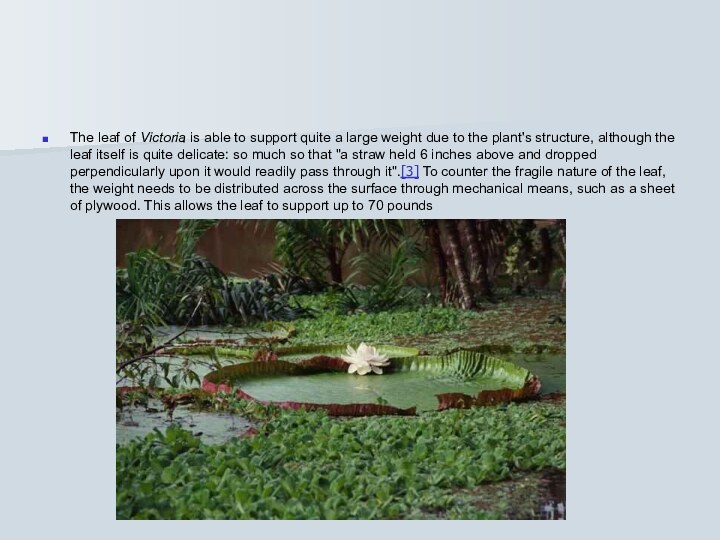

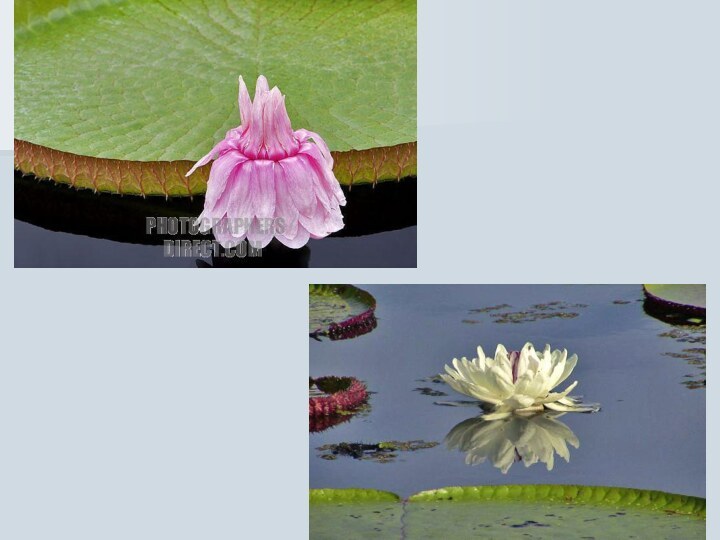
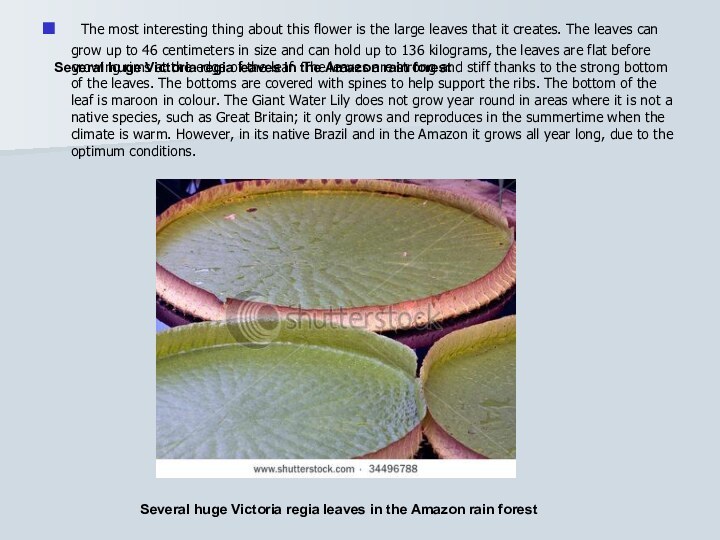


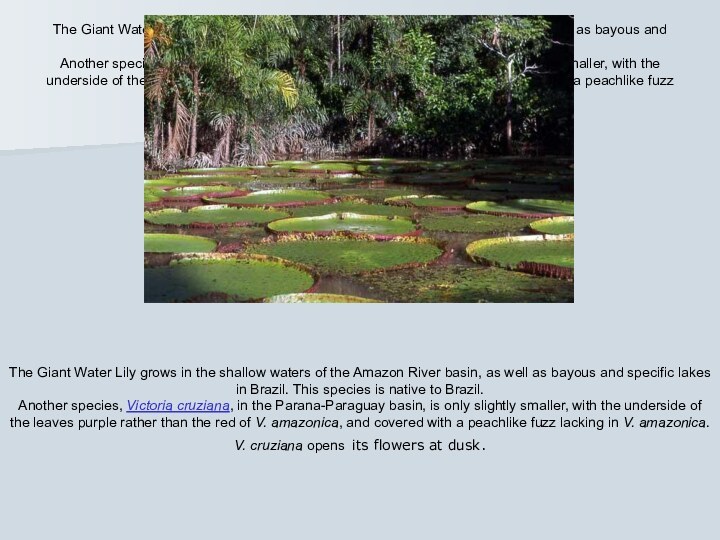

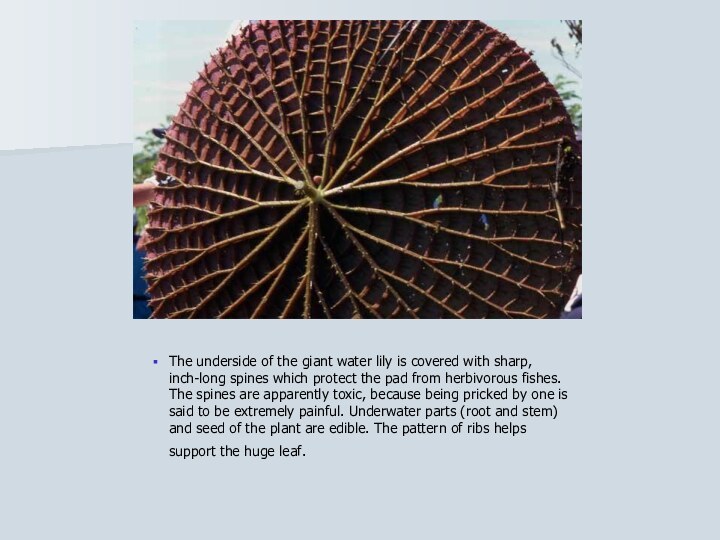
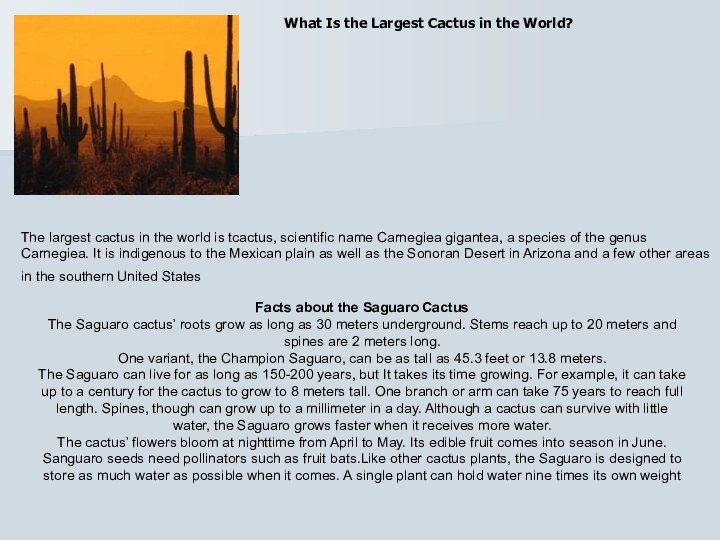


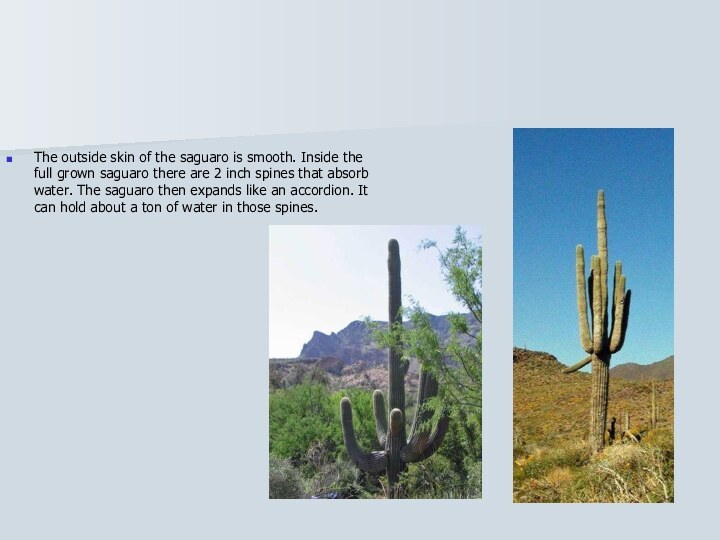
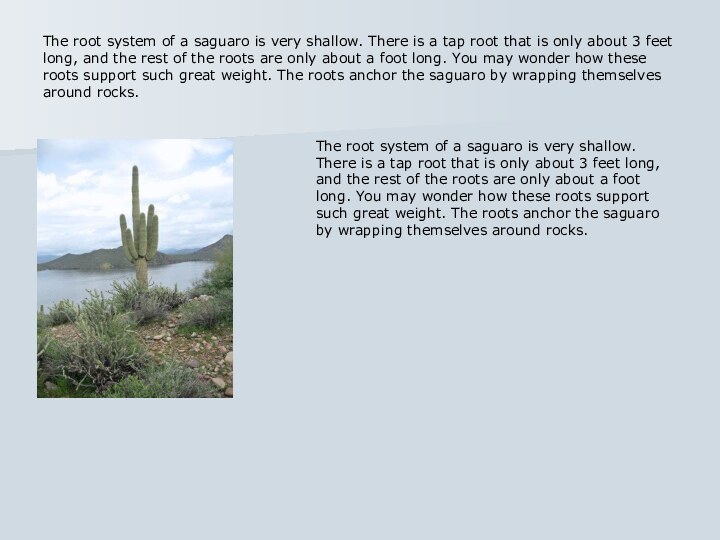
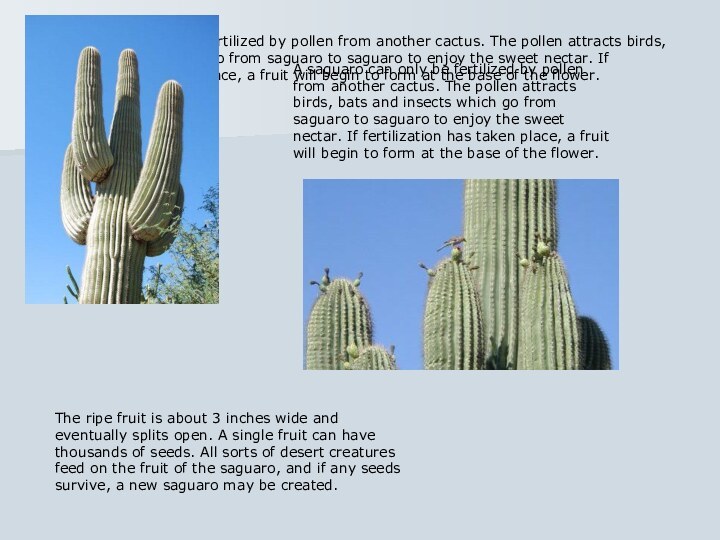
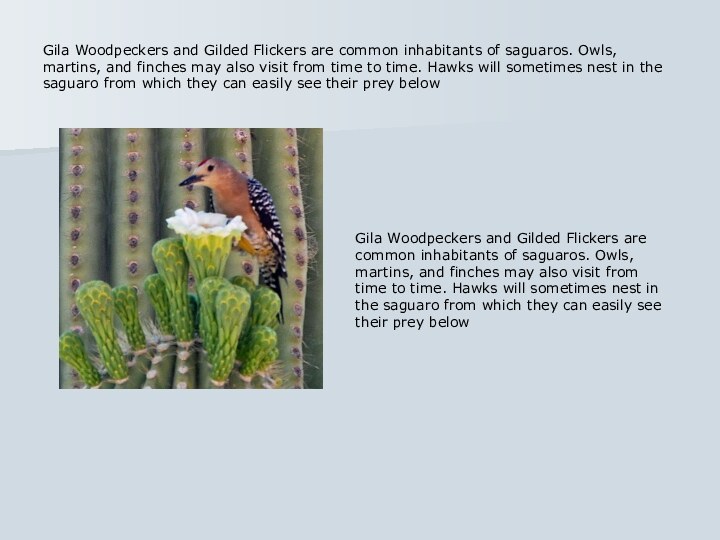



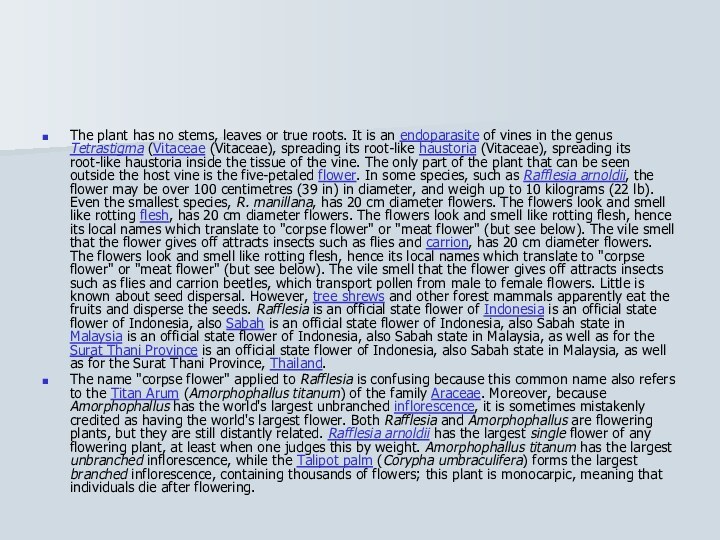







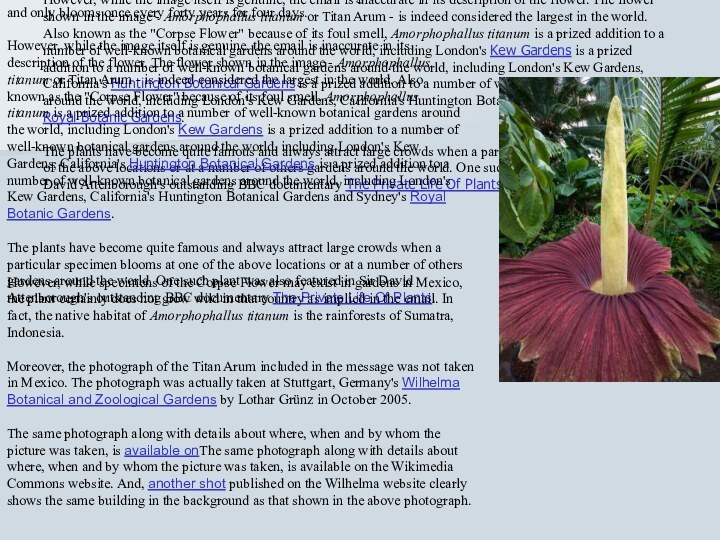
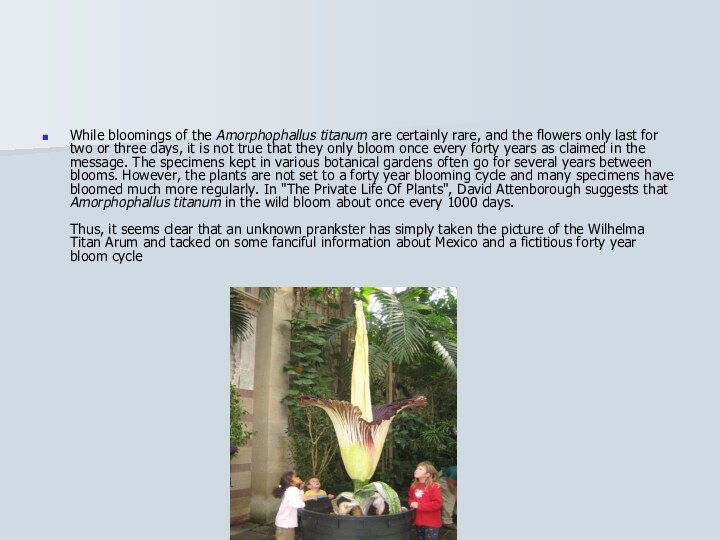

Victoria is a genus of water lilies, in the plant family Nymphaeaceae, with very large leaves that float on the water's surface. Victoria amazonica has a leaf that is up to 3 m (9.8 ft) in diameter, on a stalk 7–8 m (22.9-26.2 ft) in length. The genus name was given in honour of Queen Victoria has a leaf that is up to 3 m (9.8 ft) in diameter, on a stalk 7–8 m (22.9-26.2 ft) in length. The genus name was given in honour of Queen Victoria of the United Kingdom
Victoria amazonica is native to the shallow waters of the Amazon River is native to the shallow waters of the Amazon River basin, such as oxbow lakes and bayous. It is depicted in the Guyanese is native to the shallow waters of the Amazon River basin, such as oxbow lakes and bayous. It is depicted in the Guyanese coat of arms is native to the shallow waters of the Amazon River basin, such as oxbow lakes and bayous. It is depicted in the Guyanese coat of arms. The flowers are white the first night they are open and become pink the second night. They are up to 40 cm in diameter, and are pollinated by scarab beetles.
Another species, Victoria cruziana, in the Parana-Paraguay basin, is only slightly smaller, with the underside of the leaves purple rather than the red of V. amazonica, and covered with a peachlike fuzz lacking in V. amazonica. V. cruziana opens its flowers at dusk.
The first published description of the genus was by John LindleyThe first published description of the genus was by John Lindley in 1837, based on specimens returned from British GuianaThe first published description of the genus was by John Lindley in 1837, based on specimens returned from British Guiana by Robert Schomburgk. Lindley named the genus after the new Queen, Victoria, and the species Victoria regia. An earlier account of the species, Euryale amazonica Poeppig, in 1832 described an affinity with Euryale ferox. A collection and description was also made by the French botanist Aimé Bonpland. A collection and description was also made by the French botanist Aimé Bonpland in 1825.[1]. A collection and description was also made by the French botanist Aimé Bonpland in 1825.[1][2]
The white flowers are the size of a soccer balls. They are always white and bloom at night. After a Lily is pollinated, it changes colours until it finally turns red. It then changes into a fruit that serves as food for the fish.
Several huge Victoria regia leaves in the Amazon rain forest
A woman standing on a leaf of Victoria cruziana in the lily pond in front of the Linnaean House of the Missouri Botanical Garden. A wooden plank and a towel is placed on the pad to prevent damage to the plant.
The Giant Water Lily grows in the shallow waters of the Amazon River basin, as well as bayous and specific lakes in Brazil. This species is native to Brazil.
Another species, Victoria cruziana, in the Parana-Paraguay basin, is only slightly smaller, with the underside of the leaves purple rather than the red of V. amazonica, and covered with a peachlike fuzz lacking in V. amazonica. V. cruziana opens its flowers at dusk.
Facts about the Saguaro Cactus
The Saguaro cactus’ roots grow as long as 30 meters underground. Stems reach up to 20 meters and spines are 2 meters long.
One variant, the Champion Saguaro, can be as tall as 45.3 feet or 13.8 meters.
The Saguaro can live for as long as 150-200 years, but It takes its time growing. For example, it can take up to a century for the cactus to grow to 8 meters tall. One branch or arm can take 75 years to reach full length. Spines, though can grow up to a millimeter in a day. Although a cactus can survive with little water, the Saguaro grows faster when it receives more water.
The cactus’ flowers bloom at nighttime from April to May. Its edible fruit comes into season in June. Sanguaro seeds need pollinators such as fruit bats.Like other cactus plants, the Saguaro is designed to store as much water as possible when it comes. A single plant can hold water nine times its own weight
The saguaro flower is about a 3 inch wide cluster of creamy white petals around a dense group of yellow stamens on about a 4 inch long stem. The saguaro has more stamens per flower than any other cactus flower.
Over a period of about a month a few of the flowers open each night. They secrete a very sweet nectar into the flower tubes. By about noon the following day the flower closes forever.
The root system of a saguaro is very shallow. There is a tap root that is only about 3 feet long, and the rest of the roots are only about a foot long. You may wonder how these roots support such great weight. The roots anchor the saguaro by wrapping themselves around rocks.
A saguaro can only be fertilized by pollen from another cactus. The pollen attracts birds, bats and insects which go from saguaro to saguaro to enjoy the sweet nectar. If fertilization has taken place, a fruit will begin to form at the base of the flower.
The ripe fruit is about 3 inches wide and eventually splits open. A single fruit can have thousands of seeds. All sorts of desert creatures feed on the fruit of the saguaro, and if any seeds survive, a new saguaro may be created.
Gila Woodpeckers and Gilded Flickers are common inhabitants of saguaros. Owls, martins, and finches may also visit from time to time. Hawks will sometimes nest in the saguaro from which they can easily see their prey below
The saguaro is threatened by several factors. Lightning and root rot during the rainy season can be deadly to a saguaro. Humans use them for target practice and urban sprawl continues to move them, and their pollinators, from their native habitat. Still, there is no evidence to suggest that saguaros are declining in number.
Rafflesia
From Wikipedia, the free encyclopedia
Rafflesia is a genus is a genus of parasitic is a genus of parasitic flowering plants is a genus of parasitic flowering plants. It was discovered in the Indonesian is a genus of parasitic flowering plants. It was discovered in the Indonesian rain forest is a genus of parasitic flowering plants. It was discovered in the Indonesian rain forest by an Indonesian guide working for Dr. Joseph Arnold is a genus of parasitic flowering plants. It was discovered in the Indonesian rain forest by an Indonesian guide working for Dr. Joseph Arnold in 1818, and named after Sir Thomas Stamford Raffles is a genus of parasitic flowering plants. It was discovered in the Indonesian rain forest by an Indonesian guide working for Dr. Joseph Arnold in 1818, and named after Sir Thomas Stamford Raffles, the leader of the expedition. It contains approximately 27 species (including four incompletely characterized species as recognized by Meijer is a genus of parasitic flowering plants. It was discovered in the Indonesian rain forest by an Indonesian guide working for Dr. Joseph Arnold in 1818, and named after Sir Thomas Stamford Raffles, the leader of the expedition. It contains approximately 27 species (including four incompletely characterized species as recognized by Meijer 1997), all found in southeastern Asia, on the Malay Peninsula is a genus of parasitic flowering plants. It was discovered in the Indonesian rain forest by an Indonesian guide working for Dr. Joseph Arnold in 1818, and named after Sir Thomas Stamford Raffles, the leader of the expedition. It contains approximately 27 species (including four incompletely characterized species as recognized by Meijer 1997), all found in southeastern Asia, on the Malay Peninsula, Borneo is a genus of parasitic flowering plants. It was discovered in the Indonesian rain forest by an Indonesian guide working for Dr. Joseph Arnold in 1818, and named after Sir Thomas Stamford Raffles, the leader of the expedition. It contains approximately 27 species (including four incompletely characterized species as recognized by Meijer 1997), all found in southeastern Asia, on the Malay Peninsula, Borneo, Sumatra is a genus of parasitic flowering plants. It was discovered in the Indonesian rain forest by an Indonesian guide working for Dr. Joseph Arnold in 1818, and named after Sir Thomas Stamford Raffles, the leader of the expedition. It contains approximately 27 species (including four incompletely characterized species as recognized by Meijer 1997), all found in southeastern Asia, on the Malay Peninsula, Borneo, Sumatra, and the Philippines.
The largest flowers in the world belong to Rafflesia genus, found in southeastern Asia (Malaya, Borneo, Sumatra, Philippines).
The biggest of all is that of R. arnoldii, from Borneo and Sumatra: 11 kg, 1 m (3 feet) wide. The flower is blood-red and spreads a rotten-flesh stink, which attracts carrion flies for pollination.
But since the discovery of these plants - less than two centuries ago - they posed an enigma. Rafflesia are parasitic plants with an unusual trait. As they live on the jungle floor, extracting food from the roots of a tropical vine (Tetrastigma), they lost all organs: stem, roots, leaves. As they do not make photosynthesis,
Rafflesia do not need those organs. So, scientists found it very difficult to classify these species, creating a whole family only for them, Rafflesiaceae, and an order, Rafflesiales. "These plants are so strange - almost extra-terrestrial - wherever they were placed [within the family tree] there would be a lot of explaining to do", said Charles Davis, assistant professor of organismic and evolutionary biology at Harvard University.
But in the DNA analysis era, this obstacle could be surpassed, and to their surprise, the bizarre plants were proven to belong to the Euphorbiaceae family. The big surprise was that all plants in these family bear tiny blooms.
The most economically important species in this family are the rubber tree, castor oil plant and the cassava shrub, but in the temperate zone the most known spontaneous species are the spurges. "The big shocker, of course, is that they fall in the middle of this group with minute flowers", added Davis.
DNA analysis showed that 46 million years ago, the plants' blooms began to evolve at an accelerated pace, increasing from a tiny 2mm (0.08in) up to their enormous size. "These plants occur exclusively in tropical rainforest under-storeys, which are very dimly lit, and they are restricted to the forest floor. They don't have an easy way of presenting their flowers to various insects for pollination", said Davis. "By maximising their surface area it is much easier to waft the funky smell further
distances, which lures carrion flies."
"Their size means they also become a very effective stop sign and visual cue to lure these flies in so that they pollinate the plant."
First Rafflesia was found on the island of Sumatra. Officer Stamford Raffles and the botanist Joseph Arnold made the first scientific description of the plants and measured it. He was awarded the sonorous name - Rafflesia Arnoldi. But local residents have long known of its existence and called no less grandly - Bunga patma which means lotus flower.
This email forward claims that an attached photograph depicts a flower growing in mountains near Rio Blanco, Veracruz, Mexico that is the largest in the world and only blooms once every forty years for four days.
However, while the image itself is genuine, the email is inaccurate in its description of the flower. The flower shown in the image - Amorphophallus titanum or Titan Arum - is indeed considered the largest in the world. Also known as the "Corpse Flower" because of its foul smell, Amorphophallus titanum is a prized addition to a number of well-known botanical gardens around the world, including London's Kew Gardens is a prized addition to a number of well-known botanical gardens around the world, including London's Kew Gardens, California's Huntington Botanical Gardens is a prized addition to a number of well-known botanical gardens around the world, including London's Kew Gardens, California's Huntington Botanical Gardens and Sydney's Royal Botanic Gardens.
The plants have become quite famous and always attract large crowds when a particular specimen blooms at one of the above locations or at a number of others gardens around the world. One such plant was also featured in Sir David Attenborough's outstanding BBC documentary The Private Life Of Plants.
However, while specimens of the Corpse Flower may exist in gardens in Mexico, the plant certainly does not grow wild in that country as implied in the email. In fact, the native habitat of Amorphophallus titanum is the rainforests of Sumatra, Indonesia.
Moreover, the photograph of the Titan Arum included in the message was not taken in Mexico. The photograph was actually taken at Stuttgart, Germany's Wilhelma Botanical and Zoological Gardens by Lothar Grünz in October 2005.
The same photograph along with details about where, when and by whom the picture was taken, is available onThe same photograph along with details about where, when and by whom the picture was taken, is available on the Wikimedia Commons website. And, another shot published on the Wilhelma website clearly shows the same building in the background as that shown in the above photograph.